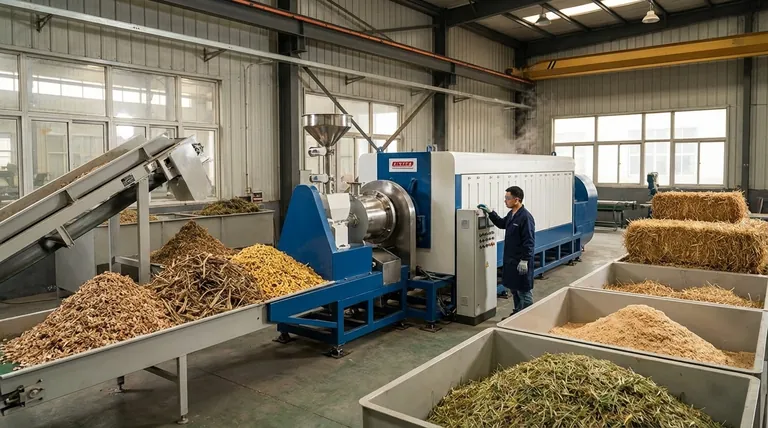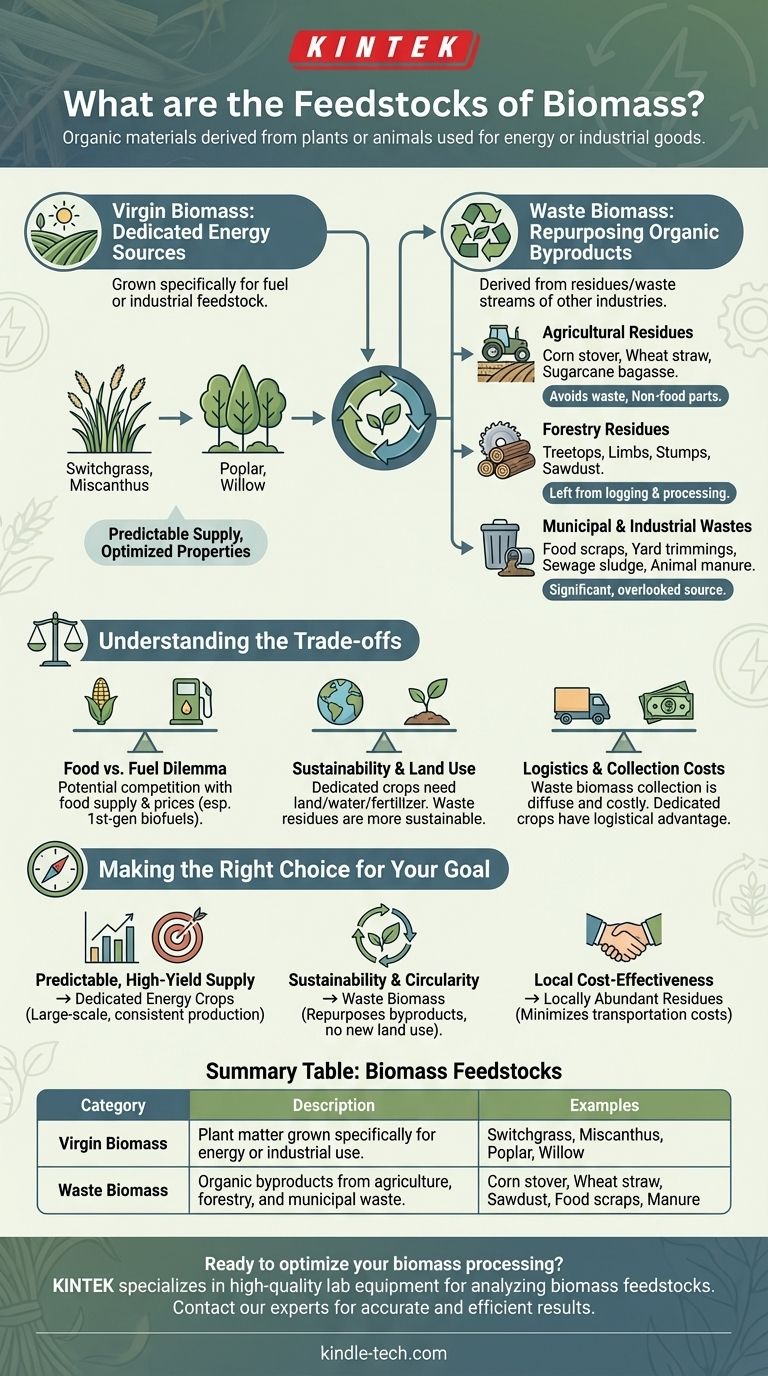Biomass feedstocks are any organic materials derived from plants or animals that can be used to generate energy or produce industrial goods. These materials are incredibly varied, ranging from crops grown specifically for energy production to wood and forest residues, agricultural waste from food crops, and even organic components of municipal and industrial waste.
The term "biomass" covers a vast array of materials with different origins and characteristics. The key to understanding its potential is not just knowing what the feedstocks are, but classifying them by their source—which ultimately determines their availability, sustainability, and economic viability.

The Primary Categories of Biomass Feedstocks
To make sense of biomass, it's best to group feedstocks into two main categories: those that are grown intentionally and those that are the byproducts of other activities.
Virgin Biomass: Dedicated Energy Sources
This category includes all plant matter grown specifically for use as a fuel or industrial feedstock. These are often called dedicated energy crops.
Because they are cultivated for a single purpose, their supply can be predictable and their properties optimized for conversion processes. Common examples include fast-growing grasses like switchgrass and miscanthus, or short-rotation woody crops like poplar and willow trees.
Waste Biomass: Repurposing Organic Byproducts
Waste biomass is derived from the residues or waste streams of other industries, such as agriculture, forestry, and municipal services. This is a cornerstone of the circular economy.
Agricultural Residues are the non-food parts of crops left over after a harvest. Examples include corn stover (stalks, leaves), wheat straw, and sugarcane bagasse. Using them for energy avoids waste and doesn't compete with food production.
Forestry Residues consist of materials left behind from logging and wood processing operations. This includes treetops, limbs, stumps, and sawdust or woodchips from lumber mills.
Municipal and Industrial Wastes represent a significant and often overlooked source of biomass. This includes the organic fraction of household trash (food scraps, yard trimmings), sewage sludge, and animal manure from large-scale farming.
Understanding the Trade-offs
While all biomass is organic, the choice of feedstock carries significant economic and environmental implications. Not all sources are created equal.
The "Food vs. Fuel" Dilemma
A major concern with some virgin biomass, particularly first-generation biofuels using crops like corn or sugarcane, is the competition with the global food supply. Using agricultural land to grow fuel can potentially impact food prices and availability.
Sustainability and Land Use
Dedicated energy crops require land, water, and fertilizer. If not managed properly, their cultivation can lead to deforestation, loss of biodiversity, and soil degradation.
In contrast, using waste residues is often considered more sustainable because it gives value to a byproduct that might otherwise be discarded and does not require additional land.
Logistics and Collection Costs
Waste biomass, such as agricultural or forest residues, is often diffuse and bulky. The cost and energy required to collect, transport, and process these materials can be a significant barrier to their economic viability. Centralized, dedicated energy crops can sometimes have a logistical advantage.
Making the Right Choice for Your Goal
Selecting a biomass feedstock depends entirely on your strategic priorities, whether they are economic, environmental, or logistical.
- If your primary focus is a predictable, high-yield supply: Dedicated energy crops offer the most control over quantity and quality, making them ideal for large-scale, consistent energy production.
- If your primary focus is sustainability and circularity: Waste biomass, such as agricultural residues or municipal organic waste, is the superior choice as it repurposes byproducts without competing for new land or food resources.
- If your primary focus is local cost-effectiveness: Utilizing locally abundant residues like sawdust from a nearby mill or manure from a regional farm is often the most economically viable path, as it minimizes transportation costs.
Understanding these feedstock categories and their associated trade-offs is the first step toward developing a truly viable and sustainable bioenergy strategy.
Summary Table:
| Category | Description | Examples |
|---|---|---|
| Virgin Biomass | Plant matter grown specifically for energy or industrial use. | Switchgrass, Miscanthus, Poplar, Willow |
| Waste Biomass | Organic byproducts from agriculture, forestry, and municipal waste. | Corn stover, Wheat straw, Sawdust, Food scraps, Manure |
Ready to optimize your biomass processing? KINTEK specializes in high-quality lab equipment and consumables for analyzing and converting biomass feedstocks. Whether you're researching dedicated energy crops or developing waste-to-energy solutions, our reliable tools help you achieve accurate and efficient results. Contact our experts today to find the perfect equipment for your sustainable energy goals!
Visual Guide

Related Products
- Electric Rotary Kiln Small Rotary Furnace Biomass Pyrolysis Plant
- Electric Rotary Kiln Continuous Working Small Rotary Furnace Heating Pyrolysis Plant
- Carbon Graphite Plate Manufactured by Isostatic Pressing Method
- Evaporation Boat for Organic Matter
People Also Ask
- What are the advantages of pyrolysis technology? Turn Waste into Profit and Reduce Emissions
- What is a disadvantage of biomass energy? The Hidden Environmental and Economic Costs
- Is pyrolysis viable? A Guide to Economic, Technological, and Environmental Success
- What are the conditions for biomass pyrolysis? Optimize Temperature, Heating Rate & Time
- What is the process of biomass fast pyrolysis? Turn Biomass into Bio-Oil in Seconds



